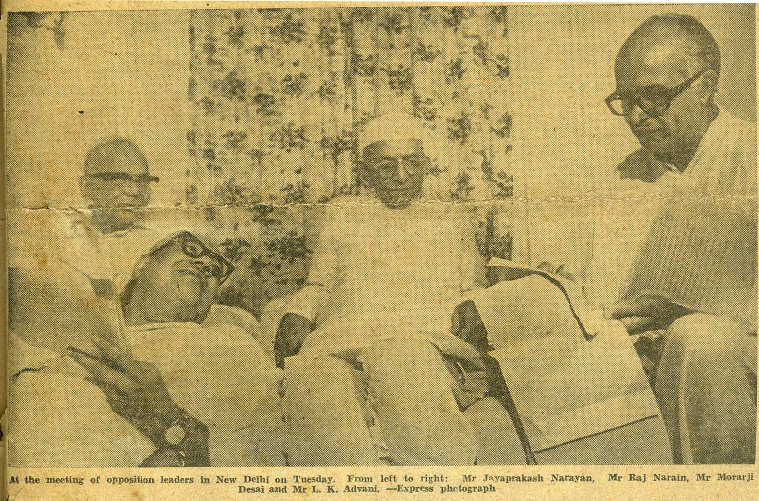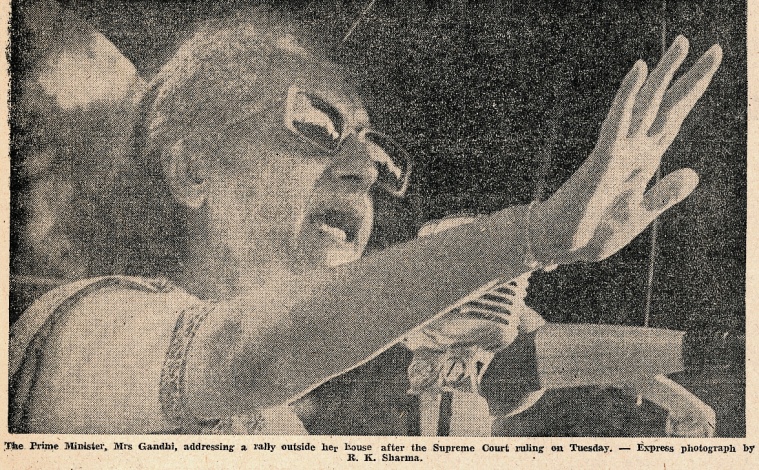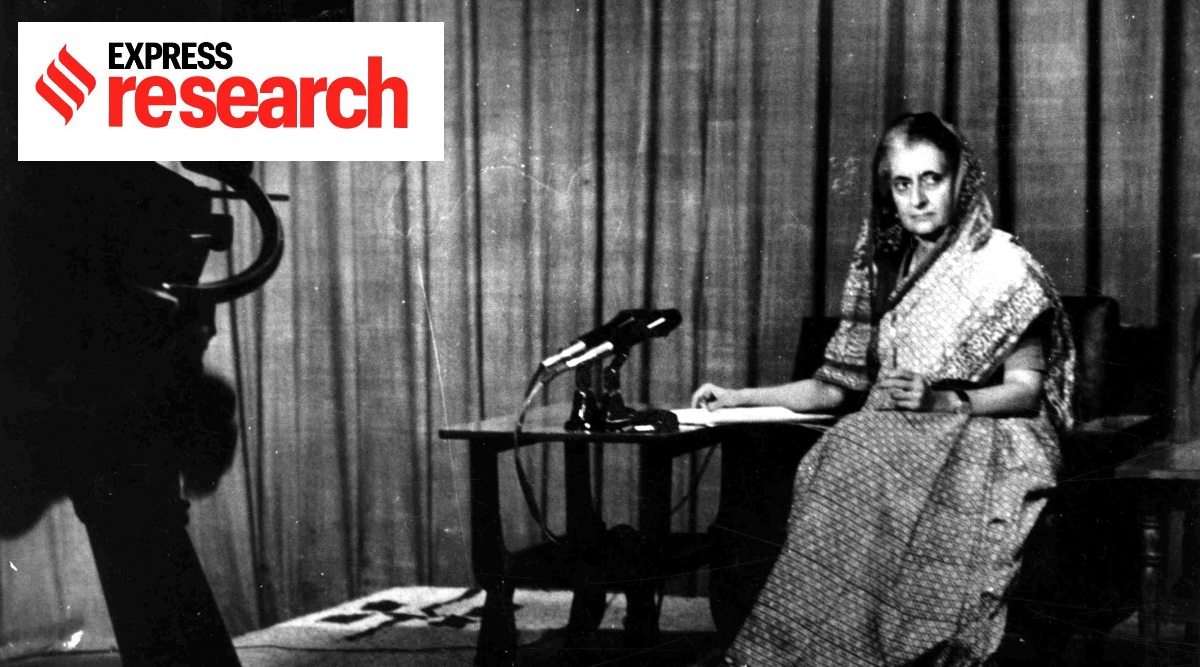“The President has proclaimed the Emergency. This is nothing to panic about. I am sure you are all aware of the deep and widespread conspiracy, which has been brewing ever since I began to introduce certain progressive measures of benefit for the common man and woman in India.”
With the announcement of these words on the All India Radio, prime minister Indira Gandhi declared the historic moment of Emergency in 1975. Analysed in retrospect to be one of the darkest period of post-independent Indian history, the two-year-long period of Emergency was also perhaps the most momentous episode in the political evolution of the Indian National Congress.

 Meeting of Opposition leaders Jai Prakash Narayan, Raj Narain, Morarji Desai and LK Advani during the Emergency in 1975. (Express archive)
Meeting of Opposition leaders Jai Prakash Narayan, Raj Narain, Morarji Desai and LK Advani during the Emergency in 1975. (Express archive)
Referred to as ‘the matriarch’ by historian Ramachandra Guha, Indira Gandhi had an uncomfortable relationship with democracy, a fact that is evident from several documented conversations of hers. Guha reproduced in his book, “India after Gandhi” a dialogue between Gandhi and her friend in 1963 wherein she said that “democracy not only throws up the mediocre person but gives strength to the most vocal howsoever they may lack knowledge and understanding.” Gandhi’s rise to the role of Congress president and then to the position of prime minister was accompanied by every effort on her part to gain absolute control over the government and her party. Her authoritarian stance was aided by her charismatic appeal, particularly among the middle class and the economically downtrodden who considered her to be the one who could rescue them from their economic problems. The Emergency, for Gandhi was her strongest attempt to shut out every democratic voice and tighten her authoritarian grip.
 Former PM Indira Gandhi addressing a rally outside her house after the Supreme Court’s Raj Narain ruling. (Express archive photo by RK Sharma)
Former PM Indira Gandhi addressing a rally outside her house after the Supreme Court’s Raj Narain ruling. (Express archive photo by RK Sharma)
Announced soon after the Raj Narain verdict, wherein the Supreme Court barred Gandhi from voting, the Emergency was one of the harshest clamp down on her political opponents and the media. The politico-economic situation including the recently concluded war with Pakistan, the 1973 oil crisis and the drought in the country, did everything to creating conditions perfect for Gandhi’s proclamation. Steeped in the urgent need for economic development, the Emergency allowed Gandhi to carry out mass arrests of ministers and have complete control over what the media published. It also resulted in her son, Sanjay Gandhi carrying out forced sterilisation drives in Delhi and slum clearance programs. Consequently, it was also the time of large scale protests against the dictatorial methods of the government. Foremost among them were the demonstrations organised by Jayaprakash Narayanan. Media outlets including The Indian Express and The Statesmen protested against the undemocratic conditions in the country. By the end of the two years, Gandhi had been at the receiving end of huge amount of criticism, both from her country’s people and from world leaders. Finally, in March 1977, India was freed from the clutches of Emergency.
Here is a timeline of important events in the Emergency of 1975:
January 1966: Indira Gandhi elected prime minister.
November 1969: The Congress splits after Gandhi is expelled for violating party discipline.
1973-75: Surge in political unrest and demonstrations against the Indira Gandhi-led government.
1971: Political opponent Raj Narain lodges complaint of electoral fraud against Indira Gandhi.
June 12, 1975: Allahabad High Court found Gandhi guilty over discrepancies in the electoral campaign.
June 24, 1975: Supreme Court rules that MP privileges to no longer apply to Gandhi. She is barred from voting. However, she is allowed to continue as Prime Minister.
June 25, 1975: Declaration of Emergency by president Fakhruddin Ali Ahmed on the advice of Indira Gandhi.
Most Read 1Chandrayaan-3 mission: Dawn breaks on Moon, all eyes on lander, rover to wake up 2As Indo-Canadian relations sour, anxiety grips Indian students, residents who wish to settle in Canada 3Karan Johar says Sanjay Leela Bhansali did not call him after Rocky Aur Rani: ‘He’s never called me but…’ 4Gadar 2 box office collection day 40: Hit by Shah Rukh Khan’s Jawan onslaught, Sunny Deol movie ends BO run with Rs 45 lakh earning 5Shubh’s tour in India cancelled: Why is the Canada-based singer facing the music?
June 26, 1975: Indira Gandhi addresses the nation on All India Radio.
September 1976: Sanjay Gandhi initiates mass forced sterilisation program in Delhi.
Also ReadThe many arguments for, and against, abortion rights How Lord Ganesha is celebrated outside IndiaKashmir when India got independence: Neither here nor thereHow Thakurs have dominated UP politics since Independence
January 18, 1977: Indira Gandhi calls for fresh elections and releases all political prisoners.
March 23, 1977: Emergency officially comes to an end.
This article was first published on June 26, 2017.


